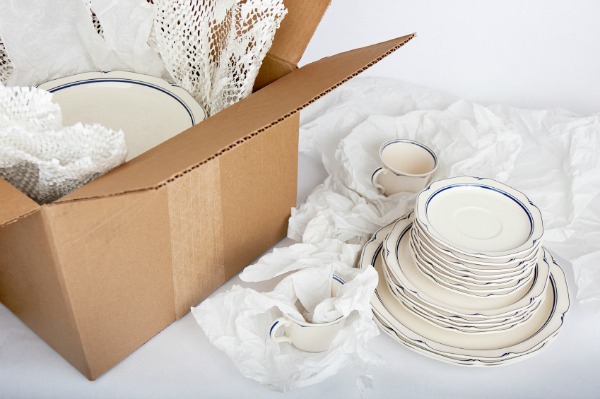Moving can be stressful enough, but it becomes especially nerve racking when you have fragile removals. There is always a chance that they can get damaged or break so it’s important to know how to move them properly and minimize this risk. Most fragile things usually have sentimental value or are an heirloom you wish to treasure so we’ll list a few tricks and tips to help make your move a little easier.

First things first – make sure to have a clear communication with your movers and to let them know (more than once if you have to) which boxes are fragile and need extra care. This will make sure that everyone who is helping knows to take their time and be as careful as possible. Professionals have dealt with fragile removals before so if this is your first time moving and you are unsure of how to pack and move your items calling a professional removalist will definitely help you in this process.
The first thing you should always account for in a move is time, and when moving fragile objects you should allow for more time than usual. Things can easily get damaged and broken when you’re in a rush so doing fragile removals takes a little care and a little extra time. Another great way to avoid this stress all together is to pack all of your fragile items away well before moving day. This way when the day comes, it’s already all done for you and you don’t have to worry about it.

Packing materials should be the next thing on your list that you should take care of. It is crucial to get the right materials so protect any valuables from any shocks, bumps, or vibrations. You need to account for all that might happen in the time from moving from one place to another, this may include being picked up and put down and travel in cars or trucks. Most people think that using blankets or towels are enough, but they slip and slide and are not that great for keeping your items in perfect condition. Some packing materials you should consider include moving boxes, loose fill or packing peanuts to fill empty spaces in boxes, heavy grade paper to wrap objects, corrugated fiberboard for structured cushioning, polystyrene structures to fit around an item for cushioning, bubble wrap, or if possible the original packaging.
Now you may not realize you have so many fragile items that need to be packed in specific orders so here is some advice on some of these items. Plates should be wrapped once and stacked sideways together in a box with crumpled paper used as padding; glasses should be filled and wrapped with tissue paper then wrapped once more with newspaper, and lamps should be disassembled and each part should be wrapped and packed separately. It is important to find out what kind of packing material each fragile object needs to be wrapped or stuffed with. It is also important to make sure you cushion inside the box and around the item once it has been placed in a designated box. Another thing that some people forget is to clearly mark these boxes as ‘Fragile’, this lets you and your mover know to handle this box with care and to make sure to load it last and unload it first.
By following these tips and using some common sense you can rest easy knowing that all your stuff will be moved in perfect condition.
























